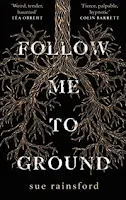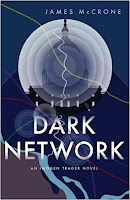“Follow Me to Ground” by Sue Rainsford – Roots of the Essential Miracle
Sue Rainsford got quite a bit of attention to herself with the publication of her very first novel, titled Follow Me to Ground.
It follows the unusual story of a daughter-father duo who work miracles and heal the sick in a small village. The arrival of a man they cannot cure changes everything.
Sue Rainsford Drags us into the Impossible Ground
While I think we can all agree today miracle cures belong to the charlatans' domain, they still very much have their place in the realms of fantasy. Even if we can't exactly hold our breath for miracles in our everyday lives, we can still find them between the pages of many novels, like Follow Me to Ground by Sue Rainsford.
Asking us to shed what we might know of reality, it transports us into a realm where the impossible is challenged by Man.
The story begins by transporting us to a small village, where Ada and her father live on the outskirts with only a singular purpose in life: to cure the sick.
What sets them apart, however, is their ability to open up bodies without the use of any instruments, and simply removing whatever illness a person might be afflicted with. When more drastic measures are called for, they bury people in the ground nearby, dangerous, but imbued with reviving properties.
While Ada's father is entirely devoted to this life, she herself isn't all too interested in spending her life healing the sick in a small village, and the arrival of a strange man named Samson give her the chance she might need to tear herself from her heritage.
However, Samson is certainly not quite what he appears to be, and Ada's father sees him as afflicted with something neither he nor his daughter can fix.
Torn between her duty and all the possibilities a new life might bring her, Ada is forced closer and closer towards far-reaching decisions, ones which might have devastating consequences for the town and the Ground itself.
The Warped Fairy Tale in Follow Me to Ground
When I finished reading this book, I felt like my first thoughts were concurrent with those of many other readers: I couldn't exactly think of any other book I read which I could compare it to.
I suppose we could classify it as dark fantasy or something of the sort, but I believe this is one of those books which truly defies classification, perhaps even giving birth to a new genre in its own right.
While the overall structure does have a fairy tale-like feeling, it always feels completely warped and pulling towards the dark side of human nature.
What I mean by all this is we have our father-daughter duo, miracle workers able to heal by touch, neither of them quite human, born out of the Ground.
There are clear elements of magic and supernatural to contend with, but much of the story is actually focused on Ada's very human and very real struggles with the ugly nature of the world she inhabits.
Rainsford gives us more than a few descriptions of the muddy ugliness of Ada's village, clouding it in a sort of grimy despair and hopelessness.
The further we move along into the story, the more surreal darkness Ada's path seems to amass, and the stronger the struggle inside her begins to brew.
At the same time, I do have to admit I wasn't too enthralled about the somewhat surprising number of erotic scenes and seemingly random depictions of pictures I couldn't quite connect to the rest of the book.
Those two elements both felt unnecessary in the extent they appeared, but at the same time I do admit they helped to build an atmosphere of wild surrealism.
An Ode to the Earth
As much as I would like to sit here and try to describe the nature of the story, it really is one of those things which begs to be experienced rather than explained.
So far, I've only really discussed the dark and grimy aspects of the story, but they are certainly contrasted with various elements of beauty empowered by Rainsford's evocative narration.
Some parts of the book legitimately feel is if they were written in poetry form, bombarding all of our senses with breathtaking imagery which often seeks to demonstrate the grandiose hiding beneath the mundane.
Even if we're taking into account the more random moments which I felt were disconnected from the rest of the story, I cannot deny the narration as a whole struck some profound chords with me and left me with quite a few mental pictures to carry around.
Beneath all of this narrative prowess is also a rather profound story with many symbolic elements and philosophical suppositions revolving around many topics from miracles and father-daughter relations to our everlasting connection to the Ground, which by the way we are seemingly keen to sever.
I won't lie, I'll probably have to read it at least a couple more times to really absorb everything the author has to convey. If you're like me in the sense where you prefer your books to have a lot of food for thought, then this novel will feel like a veritable feast.
The Final Verdict
Follow Me to Ground by Sue Rainsford is a remarkably unique and captivating novel defying classification and venturing in a direction very few, if any have gone before.
If you generally like darker fantasy novels with thought-provoking stories and an amazingly-evocative narration, then I highly suggest you give this book the chance it deserves.
 | Sue RainsfordPersonal site Sue Rainsford is an Irish writer specializing in fiction and arts based in Dublin. Having graduated from Trinity College and IADT, she earned her MFA in Writing & Literature at Bennington College in 2017. She is a recipient of the VAI/DCC Critical Writing Award for 2016 and 2007, the Arts Council Literature Bursary Award in 2013, 2018 and 2019, as well as a MacDowell Colony Fellowship in 2019. Her debut novel, Follow Me to Ground, earned her an O'Brien Award as well as a long-listing for the Desmond Elliott Prize and the Republic of Consciousness Award. |








Comments
Post a Comment